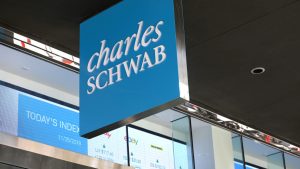HSBC (LSE: HSBA) shares paid a total dividend in 2023 of 61 cents, fixed back then at 49p. On the current share price of £7.21, this generates a yield of 6.8%.
That is nearly double the FTSE 100’s average return of 3.5% and more than twice the FTSE 250’s 3.3%.
How much passive income can be made?
Passive income is money made from minimal effort, most notably in my view from dividends paid by stocks.
£11,000 (the average UK savings) would buy me an additional 1,525 HSBC shares. In the first year, these would pay me £748 in dividends. On the same average yield, this would increase to £7,480 after 10 years and to £22,440 after 30 years.
However, my returns would be vastly greater if I used the dividends paid to buy more of the stock. This is called ‘dividend compounding’ and is the method I usually employ to dramatically increase my passive income.
Doing this on the same average 6.8% yield would lift the dividend payments to £10,671 after 10 years, not £7,480. And after 30 years on the same basis, these would jump to £73,111, not £22,440.
The total value of my HSBC shares then (including the initial £11,000 investment) would be £84,111. This would pay me £5,720 in annual passive income or £477 each month!
Is the high yield sustainable?
HSBC’s Q3 results released on 29 October showed a business well capable of maintaining a high yield, in my view.
The key drag – and the principal risk going forward – was declining net interest income (NII). This is what a bank makes on the difference in interest charged on loans it makes to that which it pays on deposits.
The bank’s NII dropped $1.6bn (£1.2bn) in Q3 from the same period last year to $7.63bn.
However, its ongoing strategic shift from interest-based to fee-based income resulted in a pre-tax profit $0.76bn higher than in Q3 2023.
This was driven by a 47% jump in its Global Banking & Markets division, to a pre-tax profit of $1.849bn. Another of its big fee-based businesses, Wealth & Personal Banking, saw a 16% rise to $3.23bn from $2.78bn in Q3 2023.
These numbers enabled the bank to pay a third interim dividend of 10 cents, in line with last year. Given the 21-cent special dividend previously announced, analysts forecast a final 2024 yield of around 9.3%, depending on the share price. This is because yields have an inverse relationship to share prices.
Will I buy the stock?
I focus on stocks that generate a 7%+ annual return, as I want to maximise my passive income.
I bought HSBC shares some time ago at a lower level when they were yielding more than my minimum requirement. However, although the shares are marginally under my 7%+ minimum now, I am gaining on the price rise.
Additionally, I believe the bank’s strategic rebalancing more towards fee-based income will continue to yield good results. This should drive the share price and dividend higher over time. So, I will buy more of the shares very soon.
This post was originally published on Motley Fool




